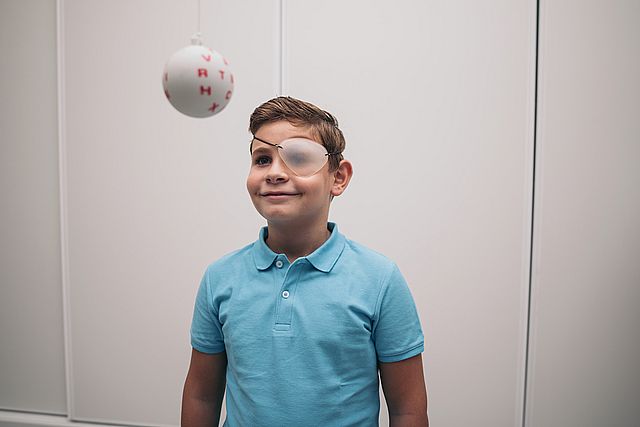Maximizing Your Vision
Through Vision Therapy
The quality of your vision can significantly impact your daily experiences — from reading a book to playing sports and even excelling in academics. For many, these simple tasks are made challenging by vision problems caused by the eyes not coordinating well.
Luckily, vision therapy presents an effective solution to enhance visual performance.

Understanding Vision Therapy

What is Vision Therapy?
Vision therapy, also known as vision training or visual training, is a structured and individualized program designed to improve and enhance visual skills and functions. These skills include eye-tracking, focusing, convergence (using both eyes together), and visual processing.
Unlike glasses or contact lenses that correct refractive errors like nearsightedness or farsightedness, vision therapy goes beyond improving the clarity of vision by addressing the root causes of visual difficulties. It does this by strengthening the connection between the eyes and the brain, resulting in the eyes working more efficiently together.
Vision therapy is crucial for children with poor visual skills who need good vision to succeed in the foundation phase of their lives.
Symptoms of Poor Visual Skills
Poor visual skills can manifest in various ways, affecting daily activities and quality of life. Here are some common symptoms that may indicate the need for vision therapy:
- Frequent headaches or eye strain, especially during or after reading.
- Blurred or double vision, especially when reading or looking at nearby objects.
- Difficulty maintaining attention or focus, particularly during tasks that require sustained visual effort.
- Frequent loss of place while reading, needing to use a finger or marker to keep track.
- Skipping or repeating lines while reading.
- Poor hand-eye coordination, affecting activities such as catching or throwing objects.
- Difficulty judging distances or depth perception, leading to clumsiness or hesitation in activities like climbing stairs or playing sports.


Progress Monitoring
Throughout vision therapy, progress is closely monitored through regular follow-up appointments. Adjustments to the treatment plan are made as needed to ensure that the patient is making consistent improvements.
How Vision Therapy Works
Customized Treatment Plans
Vision therapy begins with a comprehensive eye exam conducted by a trained optometrist. Based on this assessment, we develop a personalized treatment plan to target specific visual deficiencies. This plan includes therapeutic activities and exercises tailored to individual needs.
Building Visual Skills
Vision therapy exercises strengthen and develop visual skills necessary for good vision. These exercises are performed in-office under the guidance of a vision therapist and may include the use of specialized equipment such as prisms, lenses, and computer programs. Patients are also given exercises to practice at home.
Benefits of Vision Therapy
- Improved Academic Performance: Vision therapy can improve reading, writing, and overall academic performance by addressing visual problems hindering a child’s learning experience.
- Enhanced Athletic Abilities: Athletes often rely on visual skills such as depth perception, tracking moving objects, and hand-eye coordination. Vision therapy can improve these skills, giving athletes a competitive edge.
- Increased Confidence: Vision problems can impact self-esteem and confidence, especially in social and academic settings. By addressing and resolving these issues through vision therapy, self-confidence and overall quality of life can be enhanced.
- Reduced Eye Strain and Fatigue: Many people experience eye strain and discomfort, especially in the digital age. Vision therapy can alleviate these symptoms by improving visual comfort and efficiency, making tasks like reading or computer work more comfortable.

- Binocular Vision Improvement: For people with strabismus or convergence disorders, especially children, vision therapy can lead to more comfortable and coordinated binocular vision, reducing double vision and eye strain.

Who Can Benefit from Vision Therapy?
Although vision therapy is often targeted towards children and has a higher success rate when conducted earlier, even adults can benefit from it. Generally, vision therapy helps individuals with a wide range of visual problems, including:
- Amblyopia (Lazy Eye): Vision therapy can stimulate the weaker eye to improve its visual acuity and coordination with the stronger eye.
- Strabismus (Crossed or Misaligned Eyes): Vision therapy can correct eye alignment issues by teaching the eyes to work together.
- Binocular Vision Disorders: Conditions where the eyes struggle to work together efficiently, such as convergence insufficiency, can be treated effectively with vision therapy.
- Visual Processing Disorders: For those who struggle with processing visual information efficiently, vision therapy can enhance these skills.
